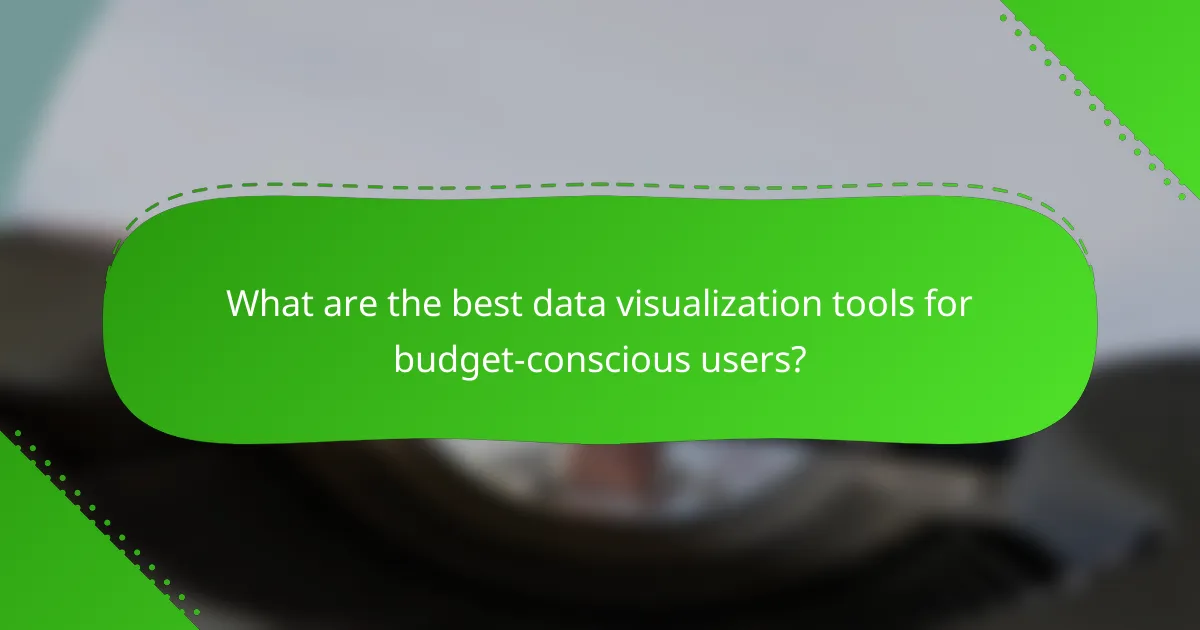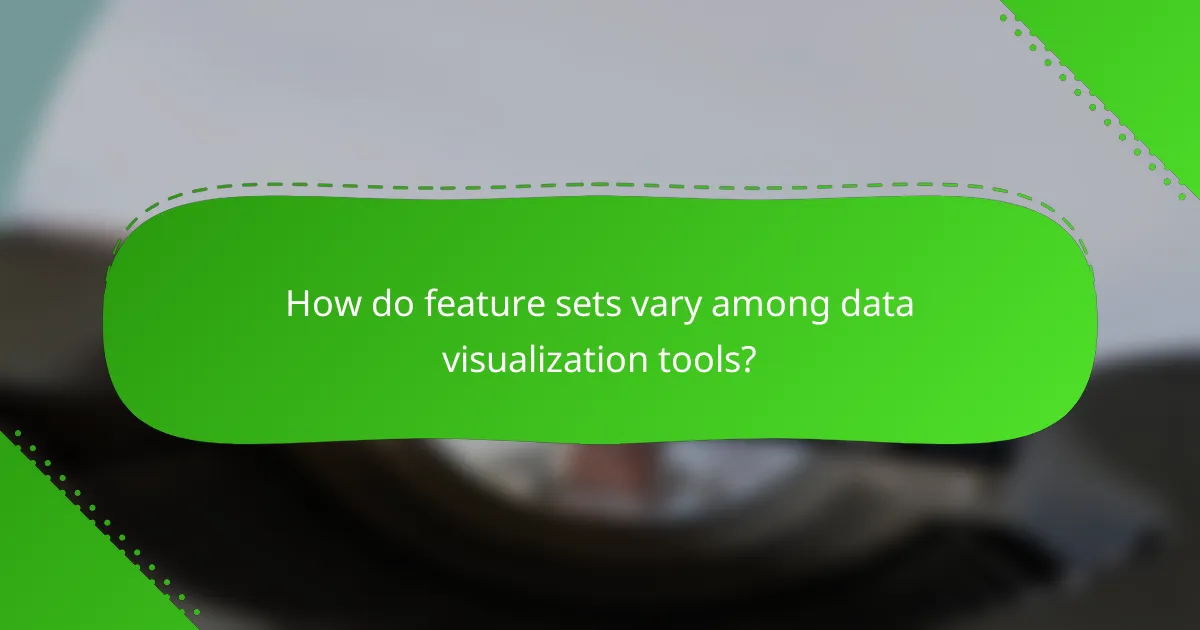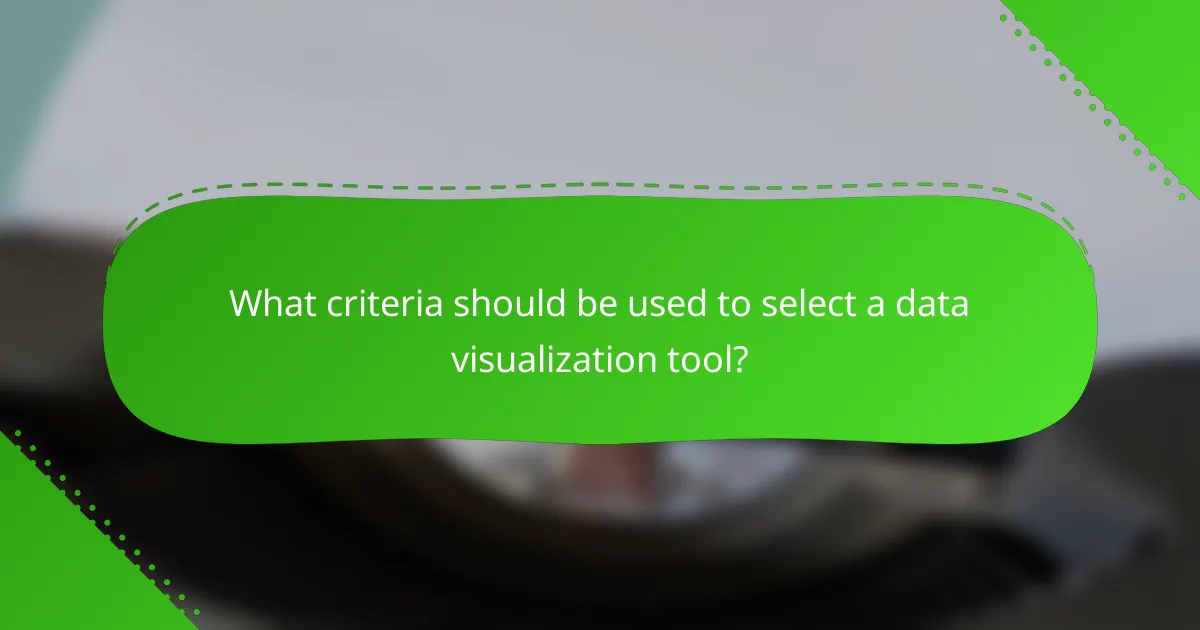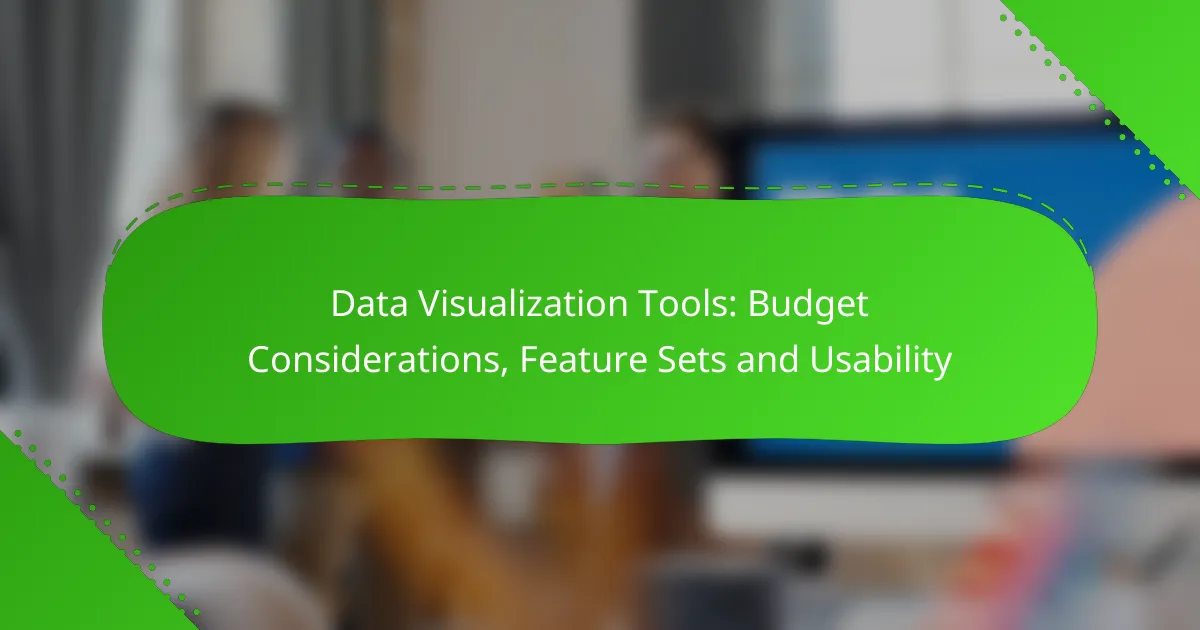Choosing the right data visualization tool involves balancing budget considerations with essential features and usability. Many affordable options provide robust capabilities, making them suitable for individuals and small businesses. It’s crucial to evaluate features like interactive dashboards and data integration, as well as the overall user experience, to ensure the tool meets specific needs effectively.

What are the best data visualization tools for budget-conscious users?
For budget-conscious users, the best data visualization tools offer powerful features without high costs. Many of these tools provide free versions or affordable pricing plans, making them accessible for individuals and small businesses.
Tableau Public
Tableau Public is a free version of Tableau, a leading data visualization software. It allows users to create interactive visualizations and share them publicly online. However, all data used in Tableau Public is accessible to others, which may not be suitable for sensitive information.
Consider using Tableau Public for projects where data confidentiality is not a concern. It provides a user-friendly interface and a robust set of features, making it a great choice for beginners and those looking to showcase their work.
Google Data Studio
Google Data Studio is a free tool that integrates seamlessly with other Google services. It allows users to create customizable reports and dashboards using data from various sources, including Google Sheets and Google Analytics.
This tool is ideal for users who need real-time data visualization without incurring costs. Its collaborative features enable multiple users to work on reports simultaneously, enhancing teamwork and efficiency.
Microsoft Power BI
Microsoft Power BI offers a free version with limited features, making it a good option for budget-conscious users. The free version allows for data visualization and sharing within small teams, while the paid version unlocks more advanced capabilities.
Users should evaluate their needs carefully; if advanced analytics and larger datasets are required, investing in the Pro version may be worthwhile. Power BI is particularly useful for organizations already using Microsoft products, as it integrates well with them.
Zoho Analytics
Zoho Analytics provides a free tier that supports basic data visualization needs. It allows users to create reports and dashboards with a user-friendly drag-and-drop interface, making it accessible for non-technical users.
For those who need more advanced features, Zoho offers affordable pricing plans. This tool is suitable for small businesses looking to analyze data without significant investment.
Chart.js
Chart.js is an open-source JavaScript library that enables developers to create responsive and interactive charts. It is free to use and is particularly useful for those with coding skills who want to customize their visualizations extensively.
While Chart.js offers flexibility and a variety of chart types, it requires some programming knowledge. It is best suited for users who want to integrate visualizations into web applications or need a high degree of customization without incurring costs.

How do feature sets vary among data visualization tools?
Feature sets among data visualization tools can differ significantly, impacting their usability and effectiveness for various tasks. Key features to consider include interactive dashboards, data integration capabilities, customization options, and collaboration features, all of which can influence the choice of tool based on specific needs.
Interactive dashboards
Interactive dashboards allow users to engage with data dynamically, making it easier to explore trends and insights. Tools that offer this feature often include options for filtering, drilling down into data, and real-time updates, which enhance user experience and decision-making.
When evaluating tools, consider how intuitive the dashboard is and whether it supports the types of visualizations you need, such as charts, graphs, or maps. A good interactive dashboard should enable users to customize views without requiring extensive technical skills.
Data integration capabilities
Data integration capabilities determine how well a visualization tool can connect with various data sources, such as databases, spreadsheets, or cloud services. Tools with robust integration features can pull data from multiple platforms, ensuring that users have access to the most current and relevant information.
Look for tools that support popular data formats and APIs to simplify the integration process. A tool that can seamlessly connect with your existing data infrastructure can save time and reduce errors in data handling.
Customization options
Customization options allow users to tailor visualizations to meet specific needs or branding requirements. This includes the ability to modify colors, layouts, and types of visualizations to better communicate insights.
When assessing customization features, consider how easy it is to make adjustments and whether the tool offers templates or design elements that align with your objectives. A flexible tool can enhance the clarity and impact of your data presentations.
Collaboration features
Collaboration features facilitate teamwork by enabling multiple users to access, edit, and share visualizations. Tools that prioritize collaboration often include options for commenting, version control, and shared access, which can improve workflow and communication among team members.
Evaluate how these features work in practice, such as whether users can easily share dashboards with stakeholders or if they can collaborate in real-time. Effective collaboration tools can enhance project efficiency and ensure that insights are readily available to all relevant parties.

What are the usability considerations for data visualization tools?
Usability considerations for data visualization tools focus on how easily users can navigate, learn, and effectively utilize the software. Key factors include user interface design, the learning curve, customer support availability, and mobile accessibility.
User interface design
The user interface (UI) design of data visualization tools significantly impacts usability. A clean, intuitive layout allows users to quickly locate features and functions, reducing the time spent on navigation. Look for tools that offer customizable dashboards and drag-and-drop capabilities to enhance user experience.
Consider the visual hierarchy of the UI elements. Important features should be prominent, while secondary options can be less visible. Tools with a well-structured interface often lead to higher user satisfaction and productivity.
Learning curve
The learning curve for data visualization tools varies widely among different platforms. Some tools are designed for beginners and offer guided tutorials, while others cater to advanced users with complex functionalities. Assess your team’s skill level to choose a tool that aligns with their capabilities.
To ease the transition, select tools that provide ample resources such as video tutorials, documentation, and community forums. A shorter learning curve can lead to quicker adoption and more effective use of the software.
Customer support availability
Customer support is crucial for resolving issues and maximizing the use of data visualization tools. Look for vendors that offer multiple support channels, such as live chat, email, and phone support. Availability during business hours or 24/7 support can make a significant difference in user experience.
Additionally, consider the responsiveness and expertise of the support team. Tools with a reputation for excellent customer service can help users overcome challenges more efficiently, leading to better outcomes.
Mobile accessibility
Mobile accessibility is increasingly important as users seek to access data visualization tools on various devices. Ensure that the tool you choose has a responsive design or a dedicated mobile app that maintains functionality across different screen sizes.
Evaluate the mobile experience by testing key features on a smartphone or tablet. A well-optimized mobile interface allows users to create, edit, and share visualizations on the go, enhancing flexibility and productivity.

What criteria should be used to select a data visualization tool?
Selecting a data visualization tool requires careful consideration of budget, specific use cases, and integration with existing systems. These criteria help ensure that the chosen tool meets both the financial and functional needs of the organization.
Budget constraints
Budget constraints play a crucial role in choosing a data visualization tool. Organizations should evaluate both initial costs and ongoing expenses, including subscription fees, training, and maintenance. Tools can range from free open-source options to premium solutions costing hundreds of dollars per user per month.
When assessing budget options, consider the total cost of ownership over time. A lower-priced tool may save money upfront but could incur higher costs in training or lost productivity if it lacks user-friendliness.
Specific use cases
Identifying specific use cases is essential for selecting the right data visualization tool. Different tools excel in various areas, such as real-time analytics, dashboard creation, or complex data modeling. For instance, a marketing team may prioritize tools that easily integrate with social media data, while a finance department might need advanced forecasting capabilities.
Consider the types of data you will visualize and the audiences you will serve. Tools that offer customizable visualizations or templates can enhance usability for specific scenarios, ensuring that stakeholders can quickly interpret the data.
Integration with existing systems
Integration with existing systems is vital for ensuring seamless data flow and usability. A data visualization tool should easily connect with your current databases, CRM systems, and other software solutions. This compatibility can save time and reduce errors when importing data.
Before making a decision, check whether the tool supports APIs or built-in connectors for your existing platforms. Tools that offer robust integration capabilities can enhance overall efficiency and provide a more comprehensive view of your data landscape.
